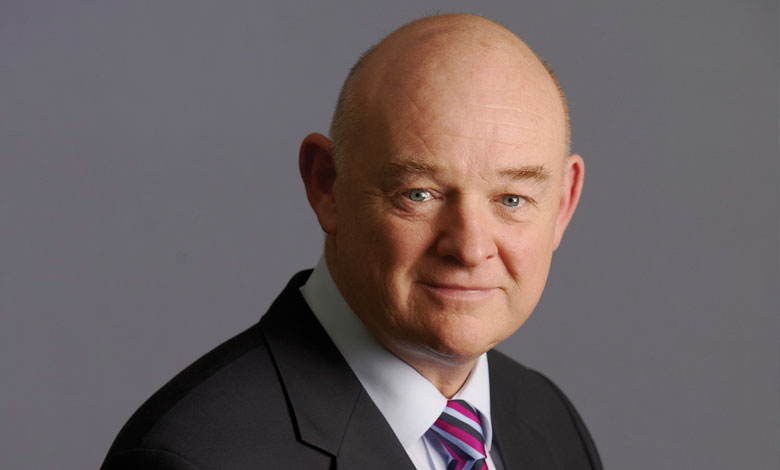Lessons learnt in time: Building an industry

Peter Dixon, former Group Chairman, CEO, and Commercial Director of Phoenix Energy reflects on the delivery of Northern Ireland’s gas infrastructure from scratch and the lessons that might inform the delivery of infrastructure for other sectors.
This article formed the basis of an open letter I sent to those who have contributed to the creation of the Northern Ireland gas industry and is a sobering reminder for those about to start on their own journey in the world of infrastructure. Fearless leadership and the will to make things happen will get you through.
I would like to thank all those involved for joining Phoenix on our journey. It was an absolute pleasure to be in the company of those who have contributed so much to the creation of our gas industry in Northern Ireland, which we now take for granted. It has been the honour of my almost 50 years of service to work alongside you these past three decades.
I felt it was my duty to capture some of the highlights of the past three decades.
Those who had been with Phoenix from the start (Richard Rodgers, Michael McKinstry, Ivan Bell, Alastair Pollock, and others) will not need to be reminded of the mountain that needed to be climbed. They were the people who made things happen. As those responsible for plotting a way forward, they were responsible for finding solutions to the myriads of challenges that faced us daily. Of course, Barry and his team at McNicholas Construction were instrumental in building the gas network we now take for granted.
It is fair to say that between 1997 and 2003, it was touch and go whether the business survived.
Phoenix was launched in late 1996 to a fanfare of expectations. However, its business plan was fundamentally flawed, and the licence was unworkable, failing to reflect the task of creating a new industry and utility. The initial plan saw the investors invest capital and recoup their investment on a 20-year return basis.
“Fearless leadership and the will to make things happen will get you through.”
In a nutshell, the original plan assumed a geographic rollout of the network, rather than a market-driven one. It believed all the skills needed upstream and downstream of the meter existed in Northern Ireland. The demand for gas was eagerly awaited, and customers would form an orderly queue while waiting for gas to be piped to their area. In addition, the plan envisaged that all of the work downstream of the meter would be an income stream for Phoenix, delivered by its own selected people. This was when oil was at $9 a barrel and Phoenix’s 20-year business plan forecast a long-run price of $28 a barrel (it was to hit over $140 a barrel by 2008).
The business plan also followed Great Britain in building the distribution network using low-pressure; that is how it had been done for 200 years. The clever alternative was to move to medium-pressure and jump forward 50 years (which we did a year later).
The business plan and the recovery period did not reflect the reality of the task. However, the then shareholders were wedded to the plan and did not take kindly to management’s assessment. Board meetings back then were a brutal affair and remain a painful memory for those who endured them.
Like it or not, the business plan had to be radically changed. The licence, whilst a good starting point, needed to be renegotiated, the investment recovery period had to be increased to a rolling 40 years from a fixed 20 years, and the bulk of the network had to be built in seven years, not 15. Partner companies had to deliver the work beyond the meter outlet, and the Phoenix workforce had to increase from 50 to around 300. Plus, over 3,000 people had to be trained to support the installation and roll-out of natural gas. Once this and many more urgent changes were implemented, the company could move forward on a planned basis.
“We dedicated our youth and the rest of our working lives to ensuring Phoenix was a successful company for Northern Ireland, centred on its customers, staff and those it answered to.”
It is fair to say that running the company daily was hard enough without the drastic changes required. Phoenix’s operating areas in the 1990s were challenging. That said, our best allies became the communities we served and still serve today and those who came to partner with us on our journey to create a more comprehensive gas industry.
Working with local businesses and being innovative allowed us to develop several significant initiatives, which created a 3,000-strong sector. Today, the downstream industry flourishes and sees competitors work together for the greater good. The Northern Ireland Natural Gas Association (NINGA), established by Phoenix in May 1997, is the jewel in the crown of the local gas industry and remains one of its unsung heroes.
Between 1996 and 2010, no year went by when we did not change ownership fully or partially (going from private to public and back to private). In addition, we were involved in a regulatory licence review or renegotiation of our licence, established our service support business, raised debt, entered investment-grade capital markets for the first time, separated our operating businesses (eventually selling our supply business and creating a new supply business in the South), sold our transmission system, and established a group structure. Yes, it was a busy decade.
While all of the above was happening, we had to grow our gas customer base by, on average, 230 new customers weekly. Natural gas today is available to over 300,000 customers across Northern Ireland and is used daily by around 230,000. Over 95 per cent of our industry and businesses, as do the >200,000 homes, rely on natural gas. Where gas is available, over 95 per cent of new properties are designed and use gas.
Do I make it sound like hard work?
At times, it was impossible, frightening, and unrewarding. But despite everything, the team at Phoenix moved forward. It was like digging a deep hole in soft, dry sand. You always had to go the extra mile, remain fearless and never give up. It is a credit to the team that we have a gas industry today.
Everyone who worked for or supported Phoenix should be proud of their achievements. Many of us put ourselves in harm’s way to get the job done and without a second thought. Back then, we were in our late twenties or early thirties (I was a little bit older) but we dedicated our youth and the rest of our working lives to ensuring Phoenix was a successful company for Northern Ireland, centred on its customers, staff, and those it answered to.
Those lucky enough to lead the company in the future should tread softly on the shoulders of those who have gone before and remember that managing a regulated utility like Phoenix is a privilege and an honour. You are running this asset on behalf of the customers you serve.
I am indebted to the management team for sticking with me through thick and thin. They were wiser than Solomon, stronger than Samson, and more patient than Job.
I wish you all the best and thank you for joining me on this journey. Without you, we would not have a gas industry to be proud of.
|
Peter Dixon Peter Dixon began his career at the age of 16 as a gas engineer in with the Gas Corporation in Liverpool. Initially fast tracked through the British Gas hierarchy to lead key strategic projects in the early 1990s, he joined Phoenix in February 1997 during its fledging phase. The development of the gas industry in Northern Ireland during Dixon’s term is recognised as one of the most successful greenfield projects of its generation. He was appointed to the Phoenix board and served as Group CEO until 2014 and more recently serving as Group Chairman from 2014 until April 2024 when he stepped down from this role. |






